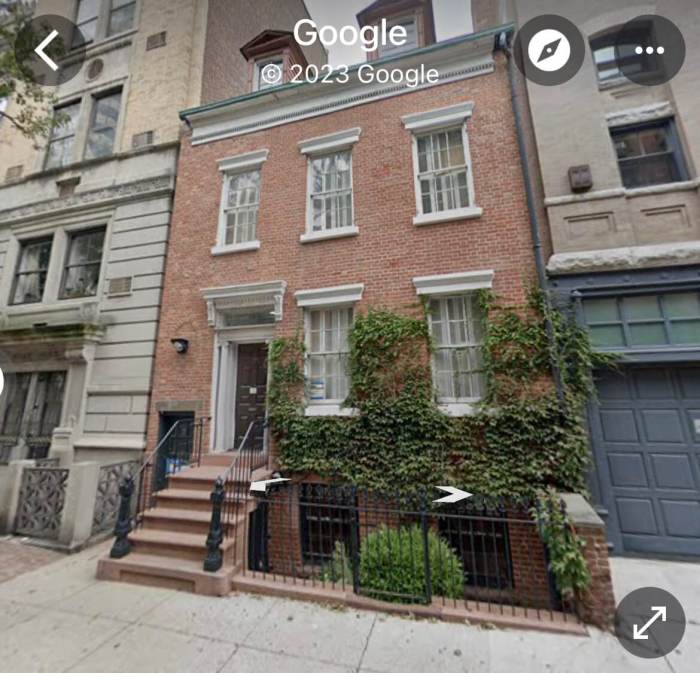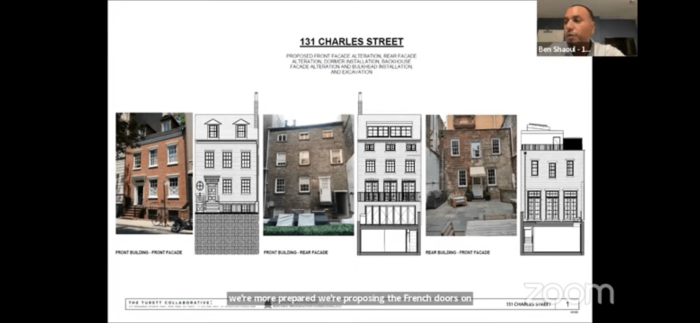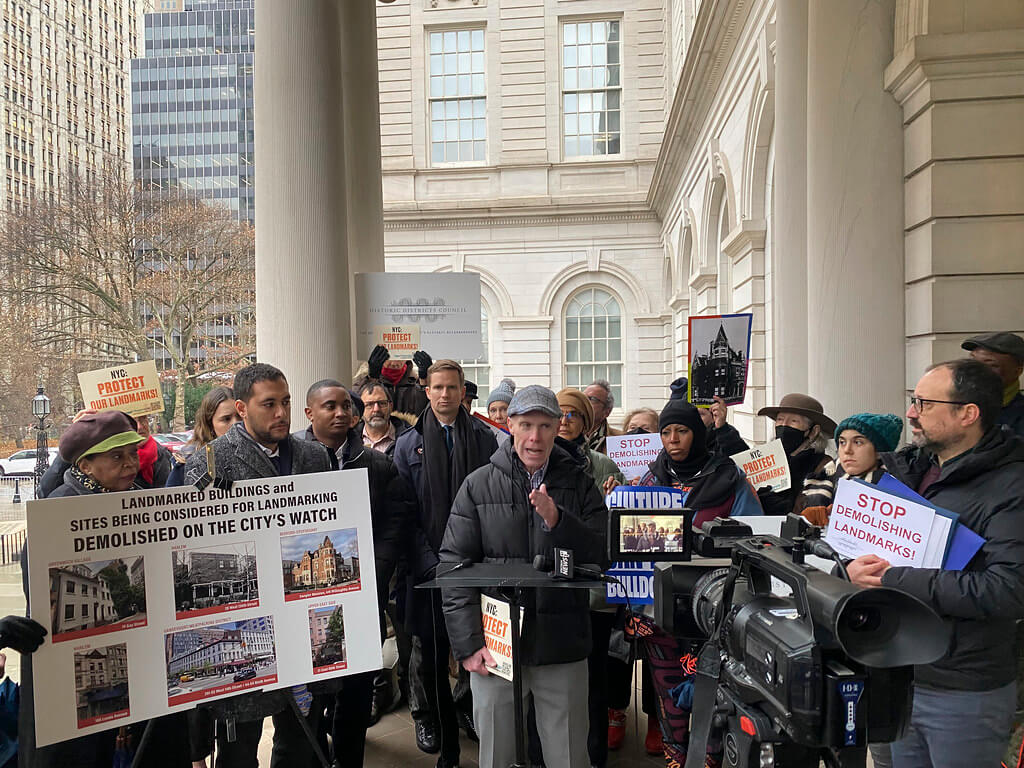Ben Shaoul — the luxury real estate developer nicknamed by tenants as “Sledgehammer Shaoul” — is embroiled in yet another dispute, this time over his Greenwich Village residence.
Shaoul wants to take a sledgehammer to his own home — a doubly-landmarked house historically protected since 1966, before even Grand Central Terminal, Central Park, and the Empire State Building. But preservationists won’t let him move another inch.
In 2018, Shaoul purchased 131 Charles St., a federal-style row house built in 1834 and situated in the heart of the Historic Greenwich Village Extension. The house is notably one of the earliest, standing examples of its kind. Shaoul applied to construct a dormer and rear yard, excavate the cellar and rear yard, and eliminate the “horse walk” a tunneled path which connects the front house to the back house. The Shaouls also “desired to join the front house and back house underground to have more living space.”
“I want to do sensitive renovation,” Shaoul said.
At a Landmarks Preservation Commission meeting on Tuesday, Shaoul argued that, “the house is between two taller buildings. Consequently, it’s always dark in both the main house and back house.” The row house is a residence for Shaoul, who also owns 129 Charles St., with his wife, four children, and dogs.
“We do approve changes to individual landmarks to allow modern needs,” said Sarah Carroll, chair of the Landmarks Preservation Commission. “But you are looking at the effect of changes to the architectural character.”

Village Preservation led the charge against Shaoul’s plan. The group serves as preservationists of the architectural heritage and cultural history of Greenwich Village, the East Village, and NoHo. The group is still reeling from what Andrew Berman, Village Preservation Executive Director, called a tragic loss of several landmarked properties over the last year, including 14 Gay St. and 351-55 West 14th St.
The back house was home to renowned American photographer Diane Arbus, who reportedly spent the most esteemed parts of career living in 131 Charles St. from 1959 to 1968.
“It was enough for a world-renowned photographer, but for Shaoul it wasn’t,” Berman said.
“I’m a big Diane Arbus fan and have some of her works,” Shaoul said.
Shaoul, who presides over New York City-based Magnum Real Estate Group, has made headlines in the past for aggressively developing high-end, luxury properties all over the East Village and the Lower East Side. It was Shaoul who pointed out in 2017 that the Lower East Side needed more “superb options“ such as condos and a Trader Joe’s, which did open the following year.
“I’ve developed over 100 buildings in Manhattan,” Shaoul said. “If anyone can do this job right it’s a professional real estate developer who lives next door with his family.”
Jacqueline Peu-Duvallon, the Historic Preservation Consulting consultant Shaoul hired for the project, called the house “diminutive“ and “penned in“ between the two neighboring buildings.

Berman said Shaoul had reached out to the Village Preservation in the past when there were been items to be presented before the Landmarks Preservation Commission. Shaoul had renovated 129 Charles Street, with Berman’s blessing, but the proposed renovation to the nearly-200-year-old 131 Charles Street house was simply “inappropriate.”
“We see this mismatch between people who bought these historical properties and what they believe they are owed,” Berman said.
Given the age of the building and its position between two other buildings, substantial construction could be a danger, Berman argued.
To renovate landmarked property, applicants, by law, must receive permission by the Landmarks Preservation Commission to renovate. If the renovation requires substantial work — as it was in this case — the proposal is sent to the respective community board and then passed onto the commission.
Shortly after, Village Preservation called attention to the issue. Berman said hundreds of letters were emailed to them in support of preserving the building.
Councilmember Erik Bottcher, Assemblymember Deborah Glick, and State Senator Brian Kavanagh submitted a joint testimony in support of Manhattan Community Board 2’s recommendation to deny permission to alter several features, including the several windows and the horse walk. Said in the testimony: “We do not believe these changes are appropriate or reflect the integrity of this historic structure in the heart of Greenwich Village.”
Patrick Ciccone, author of Bricks & Brownstone, raised the historical stakes in his testimony, pointing out that ”the house is one of the intact survivors of early 19th century lower Manhattan.”
Keeping with most public sentiment during the hearing, commission members expressed their support to keep 131 Charles Street’s historical features intact, and halting the excavation.
Berman said he believes Shaoul will come back with a revised application and that while he doesn’t believe that this building is necessarily placed in amber, he said any renovation must not endanger the building.
“We were gratified the commission pushed back on this,” Berman said. “It’s a change in tone by the commission, possibly because of the loss of 10 other Greenwich Village properties, which I think is an embarrassment for the city and the commission.”
Read more: Man Shot in Brooklyn Apartment Building

































